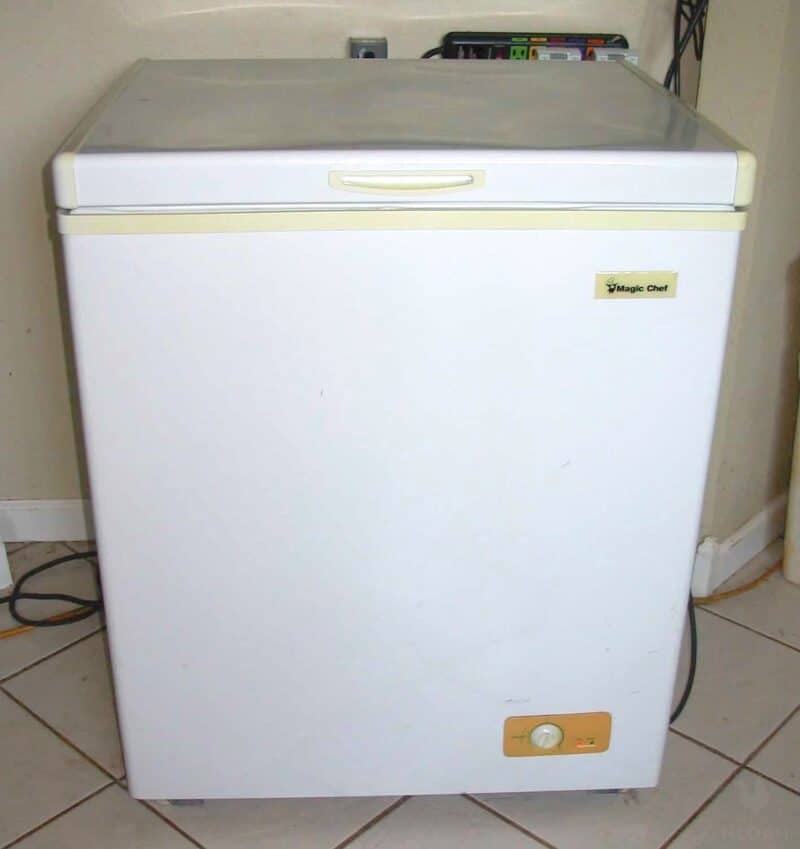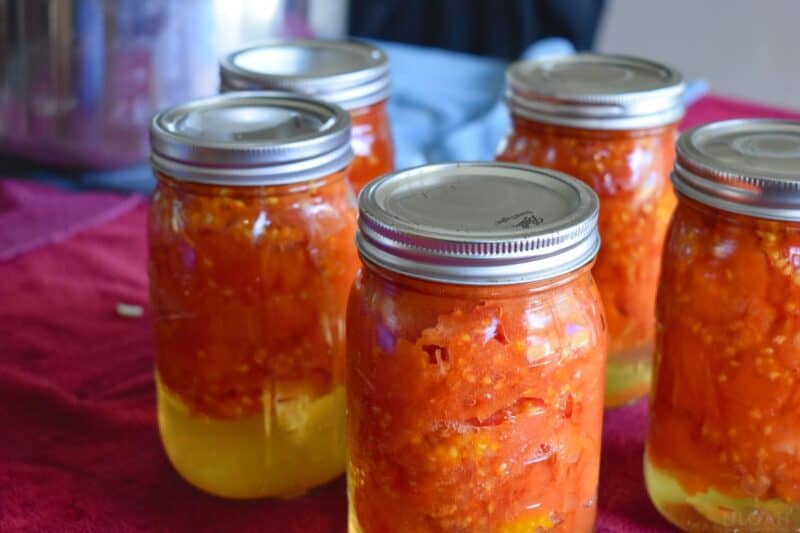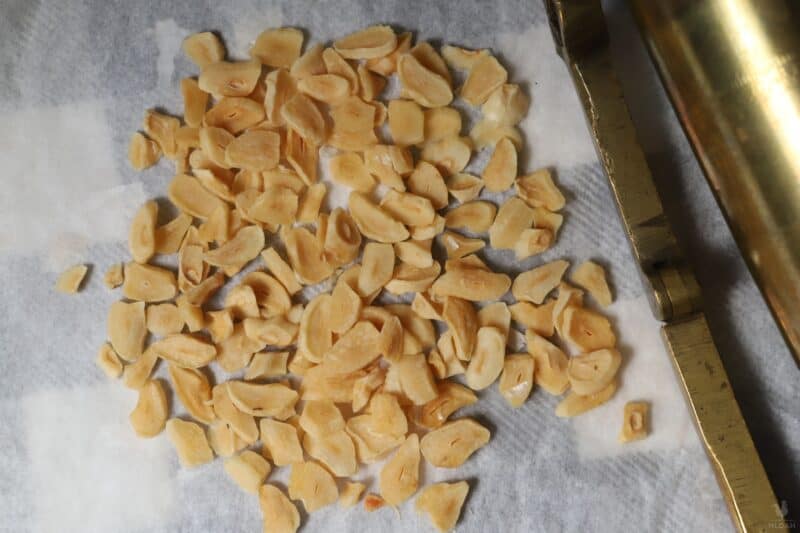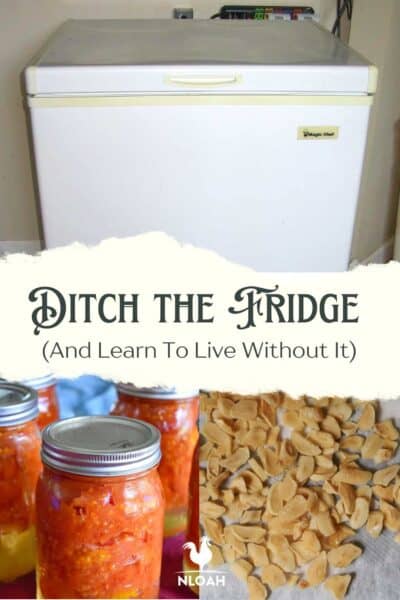If you’re going to pick a single component, a single fixture, and the average home that would be the beating heart of the house, what would you say it is? I would make a case that it is the refrigerator.

My reasoning is simple enough: the kitchen is the nerve center of the home in more ways than one, and the refrigerator is the most important appliance in the kitchen.
Without the refrigerator, so much of the food we keep on hand would spoil in days if not hours. That means the variety of food we’re able to keep at home for subsequent cooking will shrink dramatically. Or will it?
The refrigerator is so ubiquitous it is difficult to imagine life without it.
But life indeed went on for a very long time before it was invented, and around the world in many places, life still goes on just fine without them.
If you live on a homestead, by intent or necessity you might be considering getting rid of your refrigerator. If that’s the case, you’ve come to the right place.
I’ll tell you how to live without this seemingly critical appliance in the rest of this article and do so without living on rice and beans.
Why Would You Ever Be Without a Fridge?
For those of us who live in the city or in the suburbs, and indeed some of us who live on homesteads, going without a fridge for any reason is only ever an emergency: Either the appliance has died or the power is out. We don’t want to go without a fridge!
But if you’re interested in a simpler way of life, radical self-reliance or you just don’t want to be a slave to technology and infrastructure that is increasingly expensive and unreliable, you might decide to voluntarily give up your refrigerator.
Or, maybe you just want to live off-grid without any electricity worries at all- even self-generated electricity from solar panels or something else!
Refrigerators are notorious power hogs, so it stands to reason they might be cut from the budget even if you keep other electric devices and fixtures.
Whatever the case, and whatever your personal reasoning, I want you to know right now it is 100% entirely possible to live a good life, with lots of good food, without a refrigerator at all.
Ditch the Fridge by Changing How You Buy Food
The first thing that will help you unchain yourself from total dependence on a refrigerator is a fundamental lifestyle alteration. Basically, you need to change the way you buy and prepare your food. Or, for most of us, the way you produce it.
Basically, refrigerators make a lifestyle of conspicuous consumption not only easy but fundamentally possible: It’s the meals, foods, snacks, desserts, and more that are designed and marketed to go directly into the refrigerator from the store.
Anything in the freezer section of your grocery store and lots from the cold cases, will no longer have a place in your home if you ditch the fridge.
What you’ll have to do instead is buy shelf-stable preserved or fresh foods instead, and buy them exclusively. Beyond that, you’ll have to plan to make real meals from that food and do so in a timely enough manner to prevent spoilage, and then buy more food accordingly.
It sounds simple, and it is. But for most folks I know, not much more than this must be done in order to loosen the death grip that the refrigerator has on their kitchen workflow.
Stop Making Too Much Food
For me, the hardest part about getting rid of the fridge was my love of leftovers. I love the convenience of having extra food ready to pop into the microwave or into the stove for easy reheating. Who doesn’t!?
The problem is that only the refrigerator, or I should say refrigeration, can enable this sort of no-prep convenience: Cooked food, any kind, spoils quickly when left at room temperature.
It’s somewhat ironic considering that it is cooking that makes it safe to eat in the first place concerning so many foods. Without refrigeration, those leftovers will become questionable, then dodgy, and then straight-up dangerous in fairly short order.
There’s no easy answer to this. You just have to stop making so much food that you have leftovers.
Paying much closer attention to portion sizes and how much you and your family eat will prevent this sort of waste. Unless, of course, you want to throw any scraps and leftovers to your animals that can eat them.
Many Foods Can Be Preserved without Refrigeration
Now, time to get down to brass tacks. Although the fridge rules the roost when it comes to the convenience and preservation of many foods, the fact of the matter is that we, meaning humanity, have enjoyed for ages many different ways to preserve our food for the long haul.
Pretty much all of these methods are today accessible to the individual at the household level with the right skills and a modest investment in equipment.
Any food that you purchase or produce yourself, and a surprising number of prepared foods, can be stored at room temperature for a very long time with no fridge needed.

Canning
You know it, you love it. And if you don’t love it then you should! With a pressure canner or water bath canner, a little bit of elbow grease, and plenty of know-how, you can preserve delicious fresh or prepared foods for many months, potentially even years, on end.
You can do this with very little risk of spoilage, and they will be ready to eat right out of the can just like anything you buy at the grocery store.
Canning is a lot of work, and you’ve got to have a mind for both logistics and process if you want to make it a reliable part of your pantry life.
That being said, it’s a highly rewarding one. But canning is just as much art as science in my opinion, and it definitely pays to learn from a seasoned master.
If you don’t have anyone in your family who’s a prolific at-home canner, consider asking around with neighbors or look for classes put on by colleges and other institutions in your area.
This is one of the most rewarding ways to preserve food that will help you ditch the fridge almost immediately.
Drying
People have been drying food to preserve it for millennia, at the very least.
By greatly reducing the moisture content of fruits, vegetables, meat, and more, you essentially eliminate the chances that bacteria could flourish in it and begin the process of decomposition and spoilage.
At the same time, the food is still usually safe to eat as is despite a significant change in texture and sometimes taste.

Dried foods are typically thought of as rations for long journeys or survival, and they definitely excel in that regard, but they can also be rehydrated and used in recipes normally, often with a minimal loss of quality.
Disclosure: if you visit an external link in this post and make a purchase, I may earn a commission. Read my full earnings disclosure here.
One of the best things about drying is that it is so adaptable. You can use ancient techniques that rely on nothing but the sun and favorably dry weather, or invest in an inexpensive and highly efficient food dehydrator for the purpose.
Yes, that’s another electric appliance but I promise you one that uses dramatically less electricity than a refrigerator. And aside from prepping the food to go into the dehydrator, it needs very little actual work: just time.
Freeze-drying
You might think of freeze drying as a subset of dehydration, and it is in a way, but it is a supremely high-tech variation and one with even greater effectiveness.
Freeze-dried foods are first frozen and then placed into a vacuum to allow the frozen moisture to turn directly from a solid into a gas when it leaves the food. The result is food that is absolutely dry and has a tremendously long shelf life even at room temperature.
These foods may or may not be nominally edible in this state, but once again, they can be rehydrated and used in recipes or eaten normally with very little loss in overall quality.
The major advantage of freeze-dried food is that when it’s properly prepared, packaged, and protected from moisture the shelf life is almost indefinite.
The downsides are that, one, this is another electric appliance that you’ll have to invest in and power and, two, they also happen to be very expensive compared to common dehydrators.
Nonetheless, for folks who want maximum shelf life for room temperature storage conditions freeze drying cannot be beat.
Plenty of Foods Don’t Need Preserving!
I want to take a moment to remind you that lots of foods don’t really need preserving. Or at least they don’t need it in the timetable that you’re likely to eat them in. And yes, that includes all kinds of foods that we stereotypically associate with refrigerated storage.
My favorite examples are fruits and vegetables. Most do not need refrigerated storage, and often refrigeration is actually bad for them.
Your leafy salad veggies and basically every kind of fruit will do just fine at room temperature or in a cool spot of your home. Keep them away from heat sources and out of direct sunlight, and keep them dry to prevent mold.
Eggs are another good example, along with all sorts of condiments and sauces. Hard cheeses are also fine in simply cool temperatures as long as they are kept dry.
Again, refer to my advice above about only buying or stocking what you will eat in a reasonable period of time. Assuming, of course, it isn’t being kept preserved for long-term storage.
And because you’re on a homestead, assuming you have poultry or dairy animals fresh eggs or fresh milk can be had basically on demand, so you don’t need to worry about spoilage if it is “on the hoof!”
Still Need Chilled Storage?
Now, let’s get real. Refrigeration, or at least cool storage, is a major asset. There’s a reason the refrigerator is so revolutionary. But you should know that cool storage was achievable again for millennia prior to its invention!
That’s right; there are refrigeration alternatives to the refrigerator! If you still don’t want to give up entirely on the certainty inconvenience of cool storage, you are in luck, because there are lots of ways to achieve it.
Store Perishables Outside in Colder Climes and Seasons
The first and in many ways, best way to cool or even frozen storage is simply to keep the stuff outside if you live in a suitably cold region or have adequately cold fall or winter weather.
Sounds crazy, but it works just fine and is again something that your great-great-grandparents probably did themselves including with things that are more prone to spoilage like dairy and meat.
You can keep the food outside in protected boxes or other enclosures, or rely on a convenient option in the form of a window ice box, easily reachable from inside your home just by opening a window.
Protecting the storage location from sunlight and using a good thermometer to ensure adequate temperatures inside is all it takes for safety and certainty…
Try an Ice Chest or Cooler
Well before the refrigerator became a fixture in every home, the ice chest and its less effective, portable cousin, the cooler, were the staples for keeping cold goods cold. Turns out an insulated box would keep ice frozen for a good bit, long enough to reliably chill food good and cold.
They definitely work, but there is just one problem: they require ice!
Again, if you live in a truly frigid climate you can “mine” or even make your own ice in various ways, otherwise you’ll need to pick up a supply of ice once or as much as three times a week depending on the efficiency of your ice chest.
If you have a gas station, country store or supermarket nearby this is still an entirely viable option, especially if you just have a few things you like to keep in cold storage.
Zeer Pots are Ancient Refrigerators
I wasn’t kidding when I said that ancient peoples got to enjoy refrigerated storage of a sort well prior to the advent of electricity…
These ingenious devices were called zeer pots, basically, a type of evaporative cooler made from two nesting clay jars with a layer of wet sand packed in between them.
The physics behind its function is really quite ingenious, with the interaction of the wet sand and the pots serving both as highly effective insulators and also chilling mechanisms.
Reliable, very affordable, and easy to make, they work especially well in dry areas of your home or dry climates.
They are still totally viable today, especially for produce, cheeses and eggs. If you think a few drops in temperature is enough to preserve your food quickly and cheaply, they will work.
Root Cellars are Still Tops for Off-Grid Food Storage
Of course, what kind of homesteading article would this be if I didn’t mention root cellars? Root cellars have long been a fixture for people around the world throughout history and that’s for a very good reason: they work!
When you start to go underground, the temperature tends to get cooler and also stabilize. A well-built and ventilated root cellar will stay very cool (much cooler than that inside a zeer pot) and quite dry, making it ideal for storing vegetables and other goods.
It might seem like a big undertaking to install a root cellar, but if you have a basement, there’s a good chance that it might be able to work just fine with a little bit of modification.
If not, there are countless designs from the simple and inexpensive to the highly intricate that you can DIY and dig yourself.
Spring Houses Can Keep Food Cool
A sort of cousin to the root cellar is the spring house. A spring house is a highly limited but undeniably effective food storage solution. It’s limited only by the fact that you need a spring or other source of cool, flowing water on your property to implement properly.
The spring house is built partially or entirely over the water, and the cool water moving beneath it dramatically chills the air inside.
Humidity can be an issue, but with proper ventilation, what you basically get is a walk-in refrigerator, although one that is not nearly cold enough for properly freezing food.
The good news is they can provide more than enough storage or even a large family. If your property will support one, and you don’t mind walking down to it to get what you need, it is hard to beat a spring house for cool storage!

Tom has lived and worked on farms and homesteads from the Carolinas to Kentucky and beyond. He is passionate about helping people prepare for tough times by embracing lifestyles of self-sufficiency.
